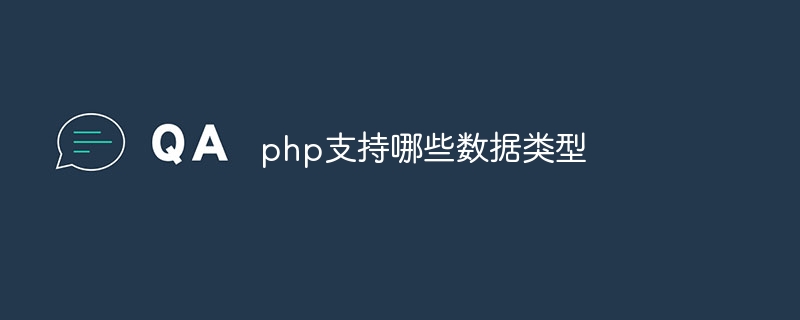
The data types supported by php include strings, integers, floating point numbers, Boolean values, arrays, objects, NULL and resources, etc. Detailed introduction: 1. String, a data type composed of a series of characters. In PHP, strings can be defined using single quotes or double quotes; 2. Integers are numbers without decimal points. PHP supports positive integers and negative integers. and zero; 3. Floating point numbers, which are numbers with a decimal point; 4. Boolean values, which have only two values: true and false, used to represent the results of logical judgments; 5. Arrays, etc.

The operating environment of this tutorial: Windows 10 system, PHP8.1.3 version, Dell G3 computer.
PHP is a widely used server-side scripting language that supports multiple data types, including basic data types and composite data types. The data types supported by PHP will be introduced in detail below.
1. String: A string is a data type composed of a series of characters. In PHP, strings can be defined using single or double quotes. For example:
```php $name = "John"; ```
2. Integer (Integer): An integer is a number without a decimal point. PHP supports positive integers, negative integers and zero. For example:
```php $age = 25; ```
3. Floating point number (Float): Floating point number is a number with a decimal point. For example:
```php $price = 9.99; ```
4. Boolean: Boolean has only two values: true and false. Used to express the results of logical judgments. For example:
```php $is_admin = true; ```
5. Array: Array is a composite data type that can store multiple values. In PHP, an array can be an indexed array or an associative array. Indexed arrays use numbers as keys, and associative arrays use strings as keys. For example:
```php
$fruits = array("apple", "banana", "orange");
$person = array("name" => "John", "age" => 25);
```6. Object: Object is a composite data type that can encapsulate data and methods. Objects can be created through classes. For example:
```php
class Person {
public $name;
public $age;
}
$person = new Person();
$person->name = "John";
$person->age = 25;
```7. NULL: NULL means that the variable has no value. For example:
```php $address = NULL; ```
8. Resource: A resource is a reference to an external object, such as a database connection or an open file. For example:
```php
$connection = mysqli_connect("localhost", "username", "password");
$file = fopen("file.txt", "r");
```Summary:
PHP supports multiple data types, including characters Strings, integers, floating point numbers, Boolean values, arrays, objects, NULL and resources. Understanding the characteristics and usage of these data types can better use PHP to process different types of data.
The above is the detailed content of What data types does php support?. For more information, please follow other related articles on the PHP Chinese website!